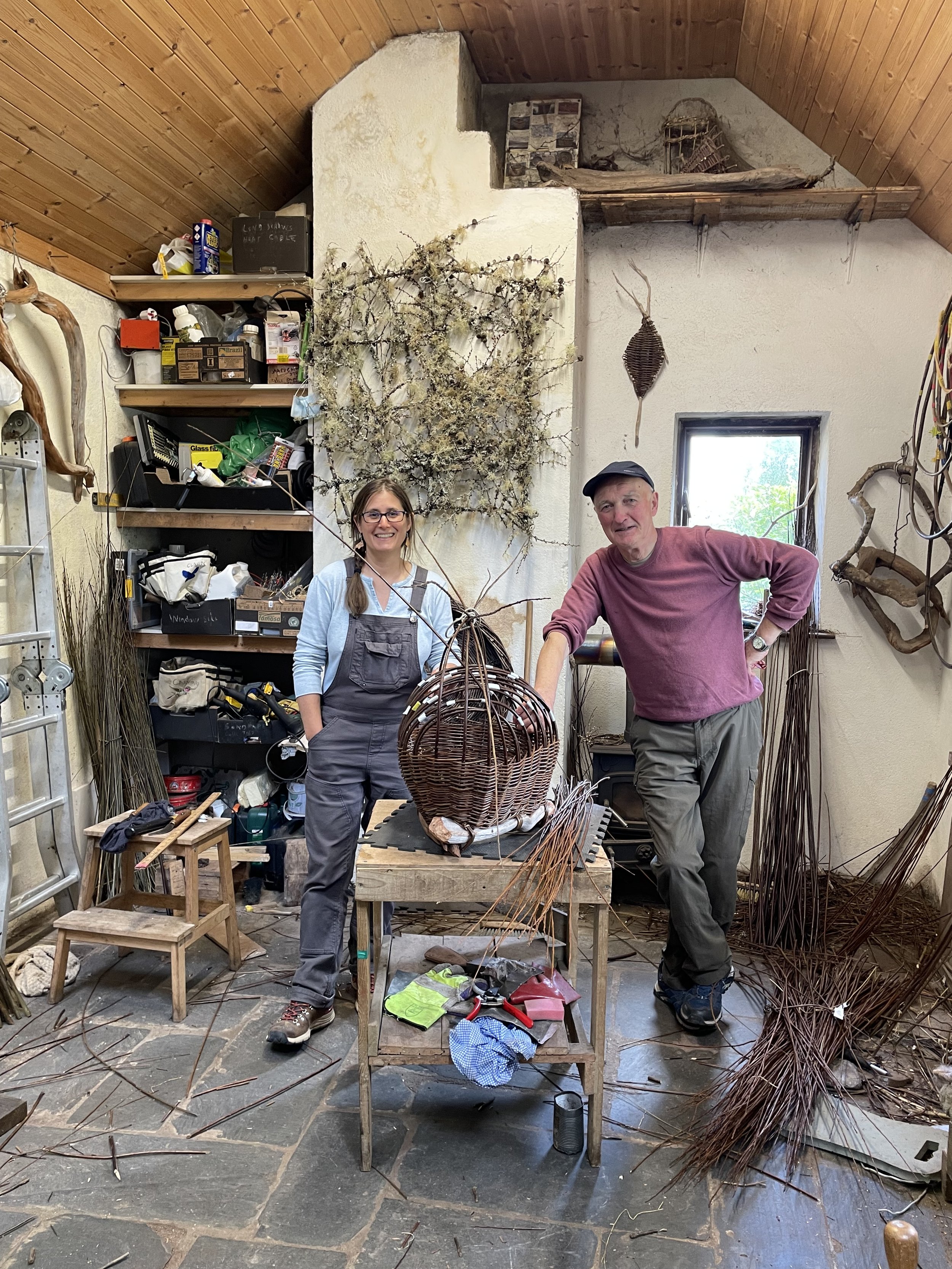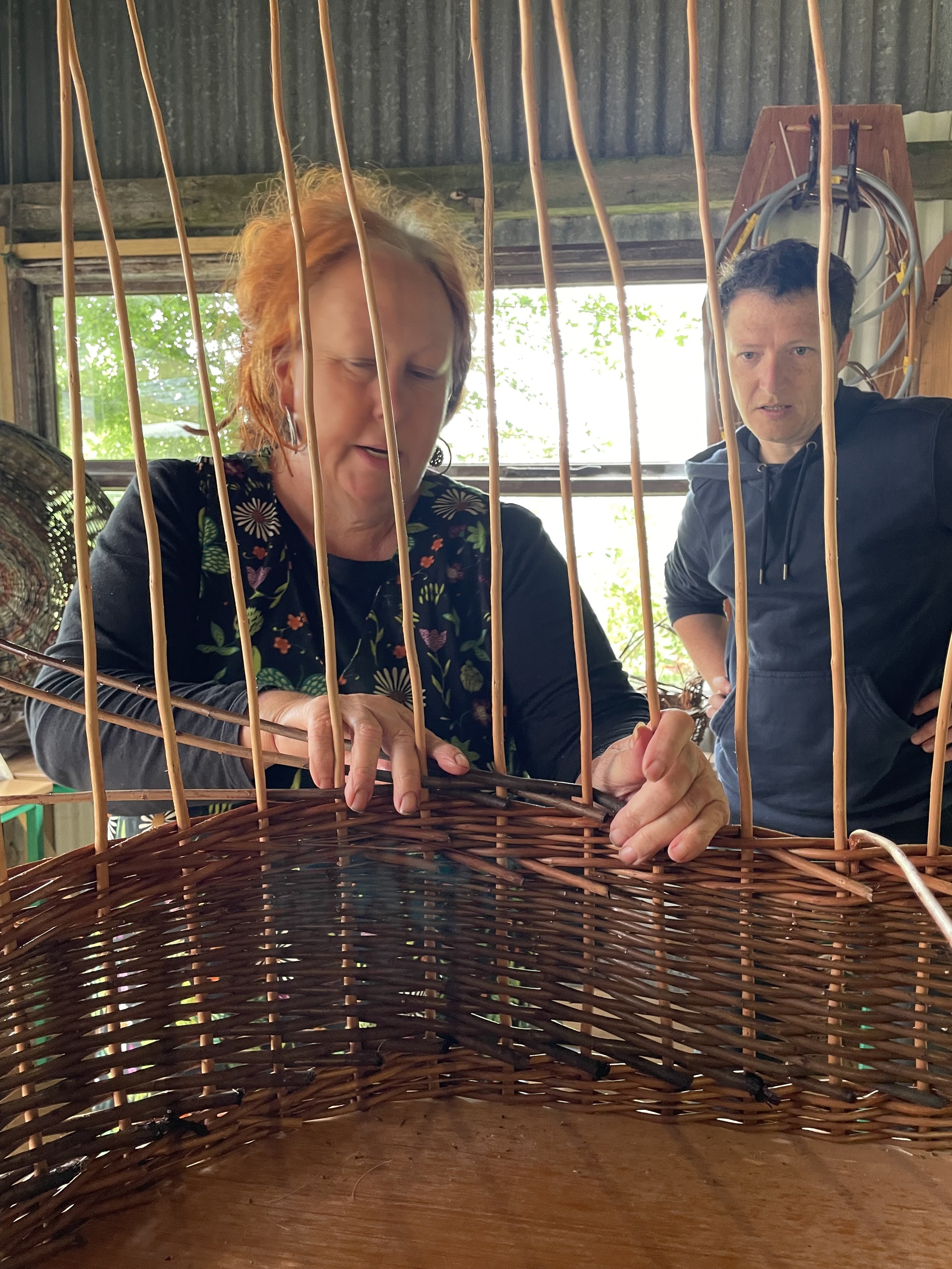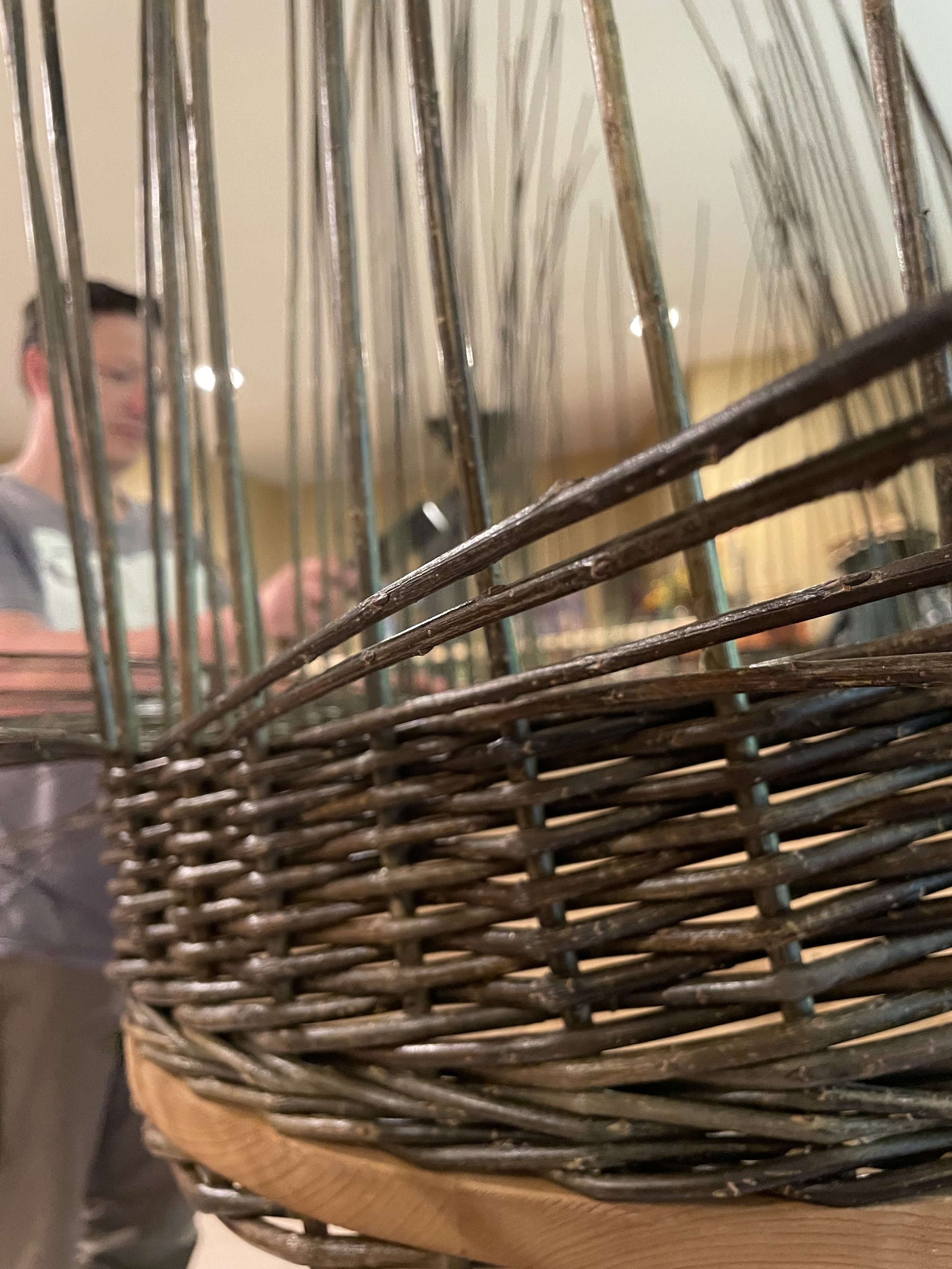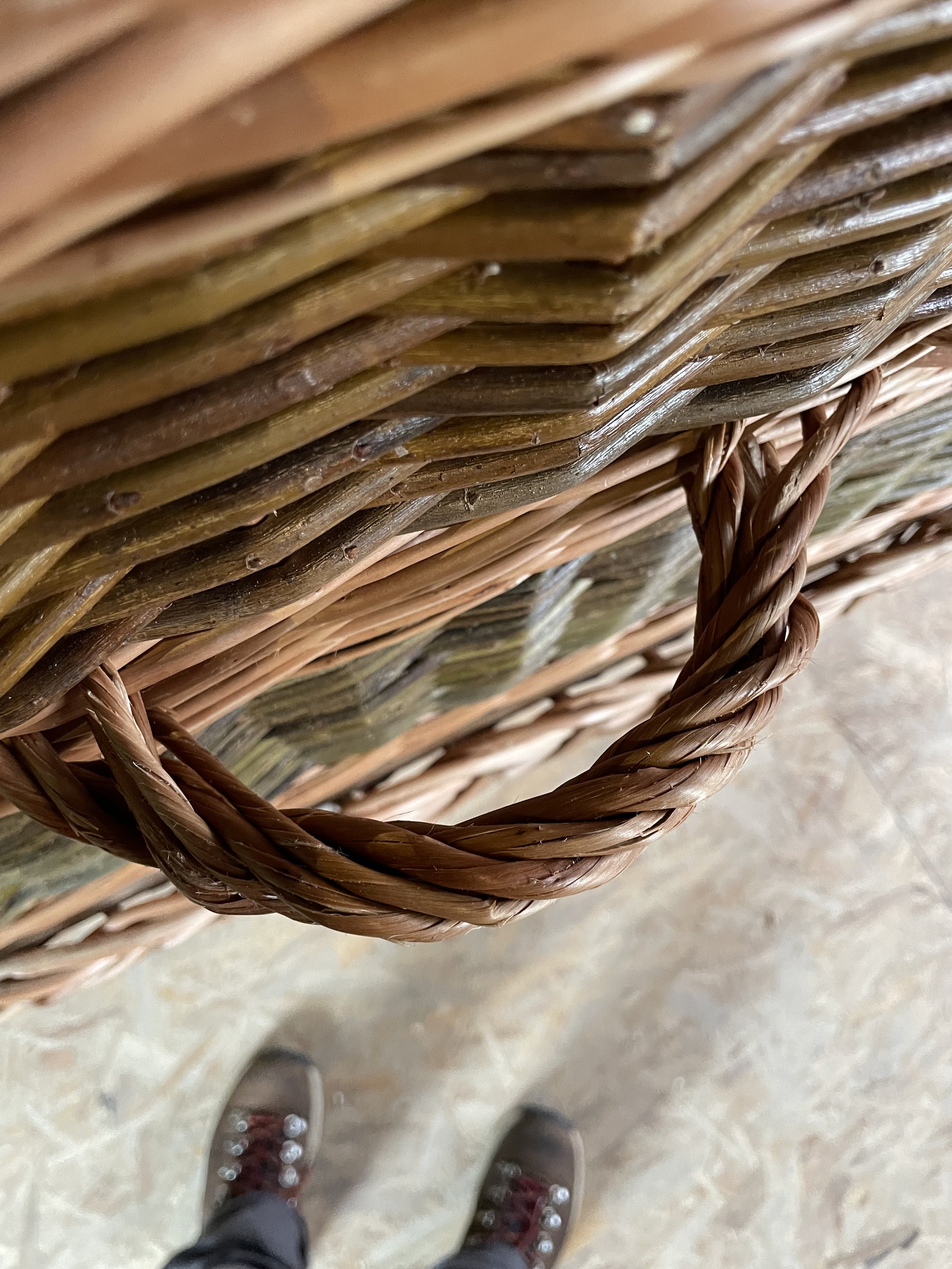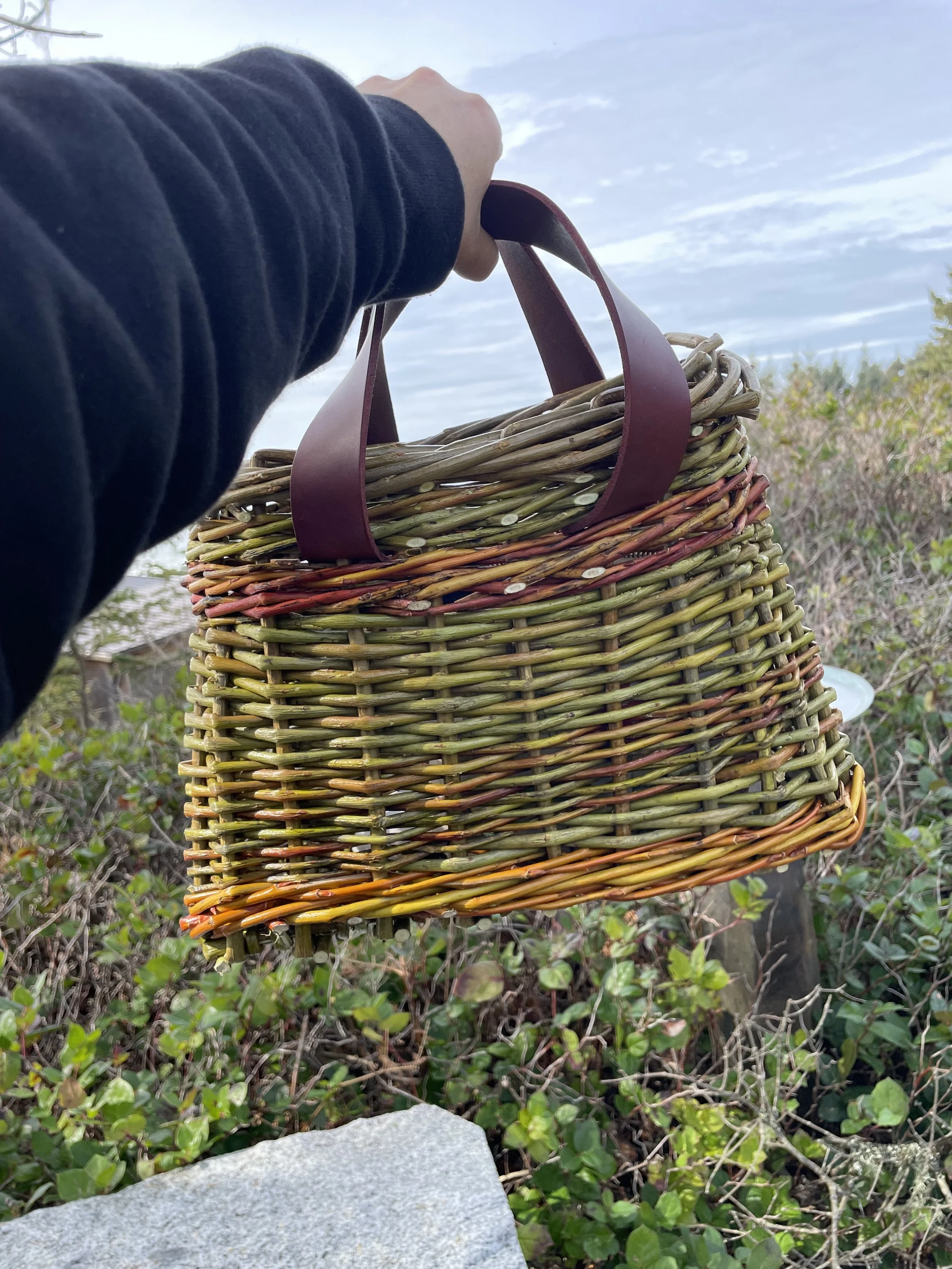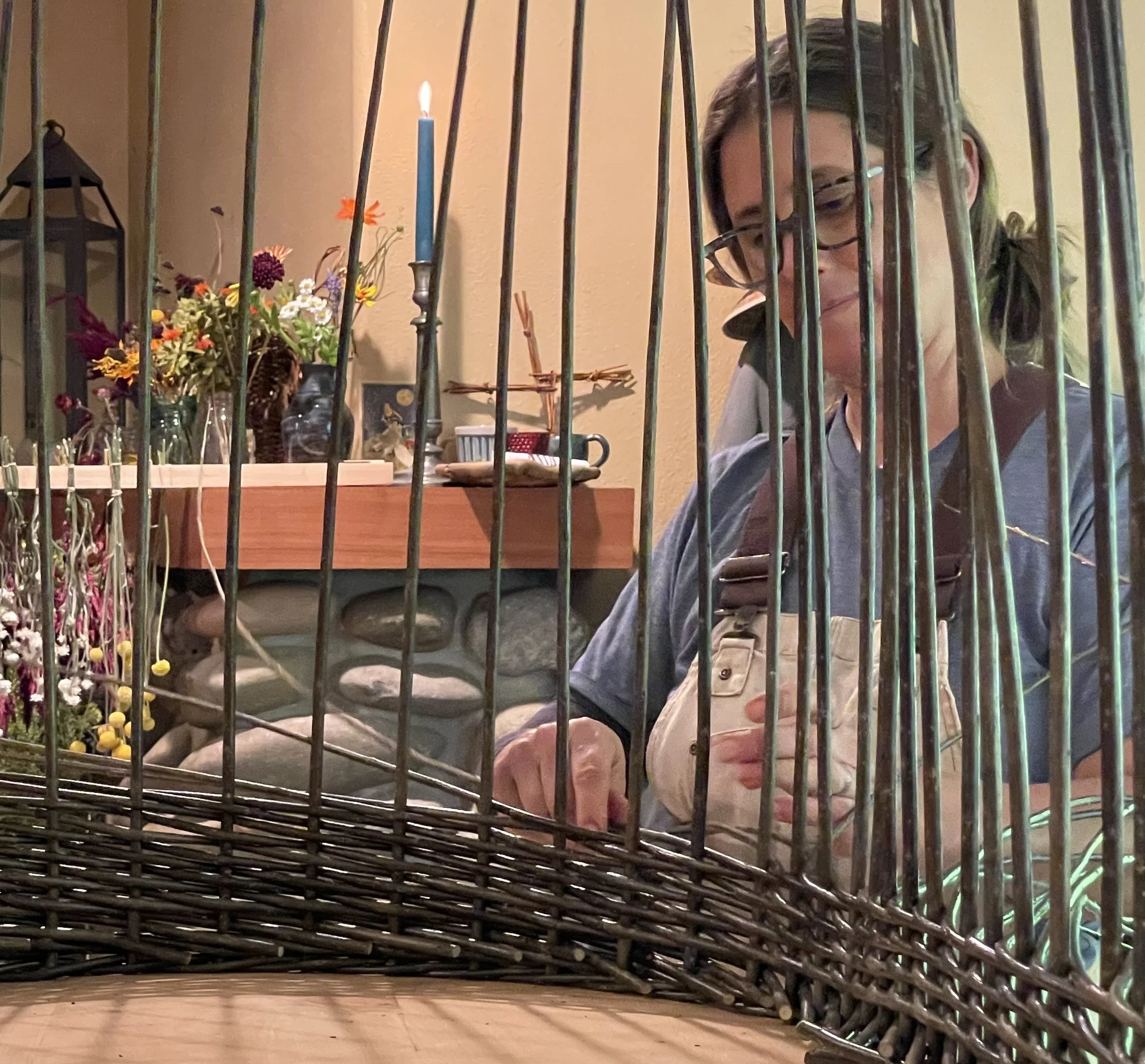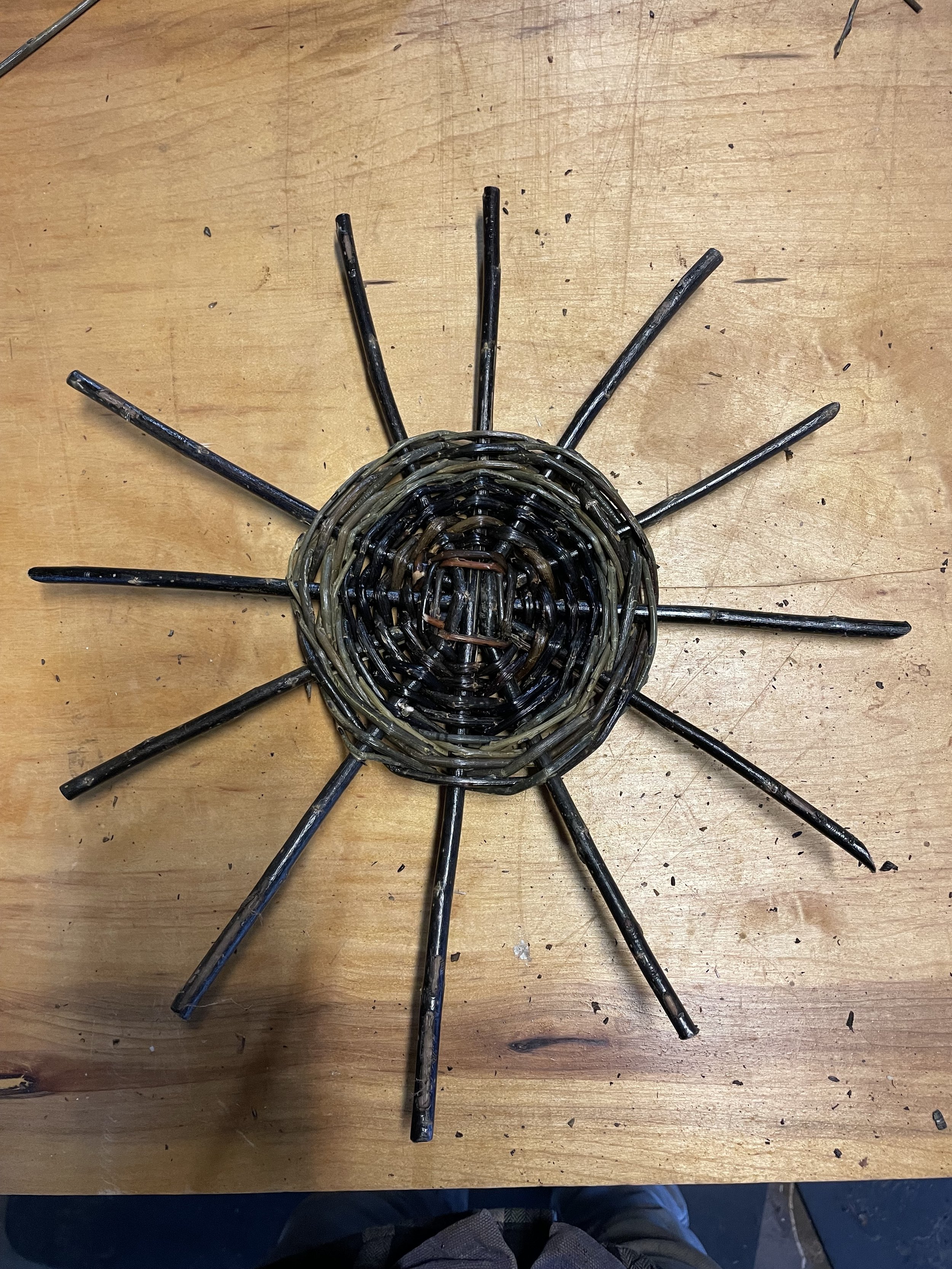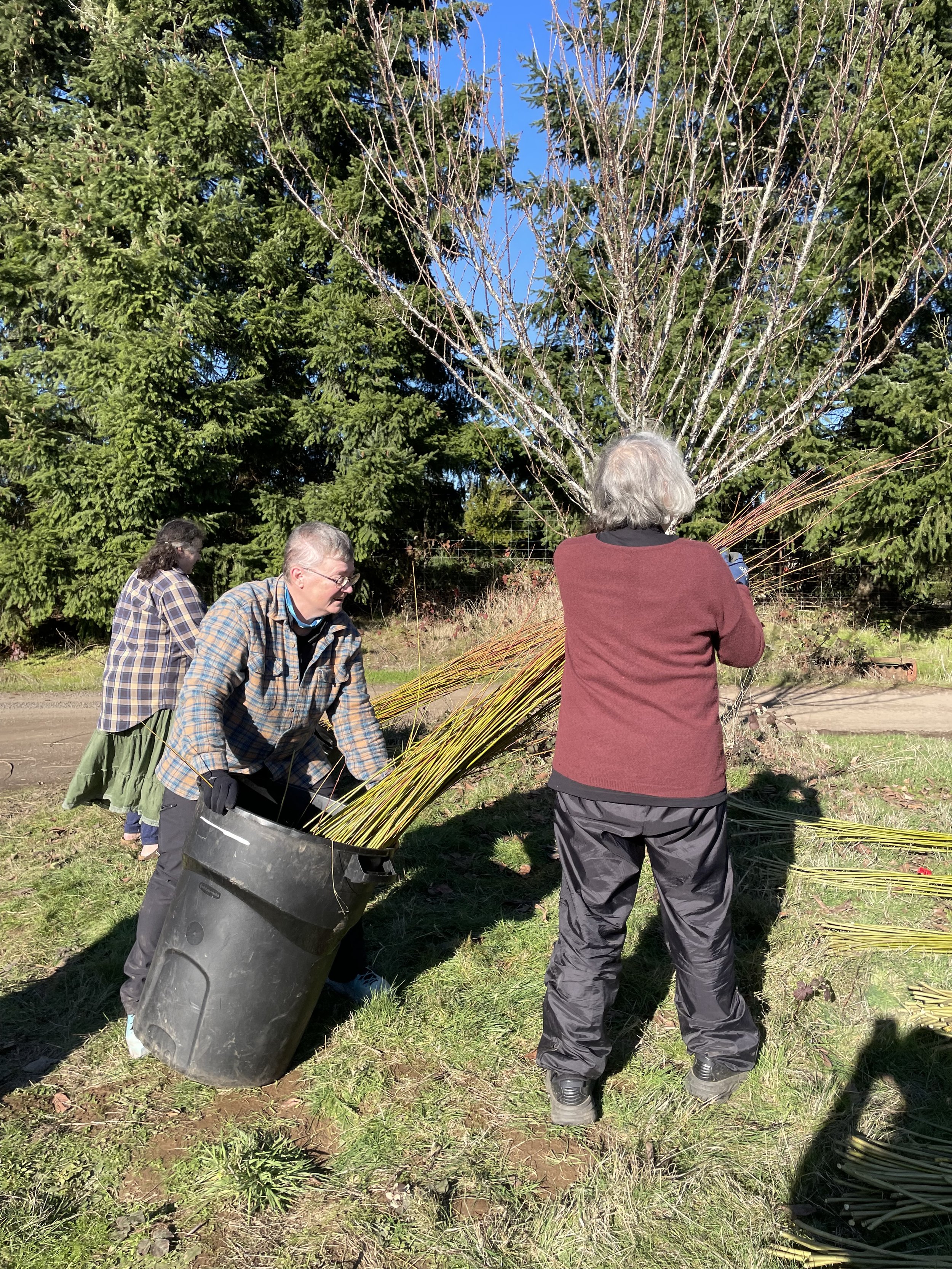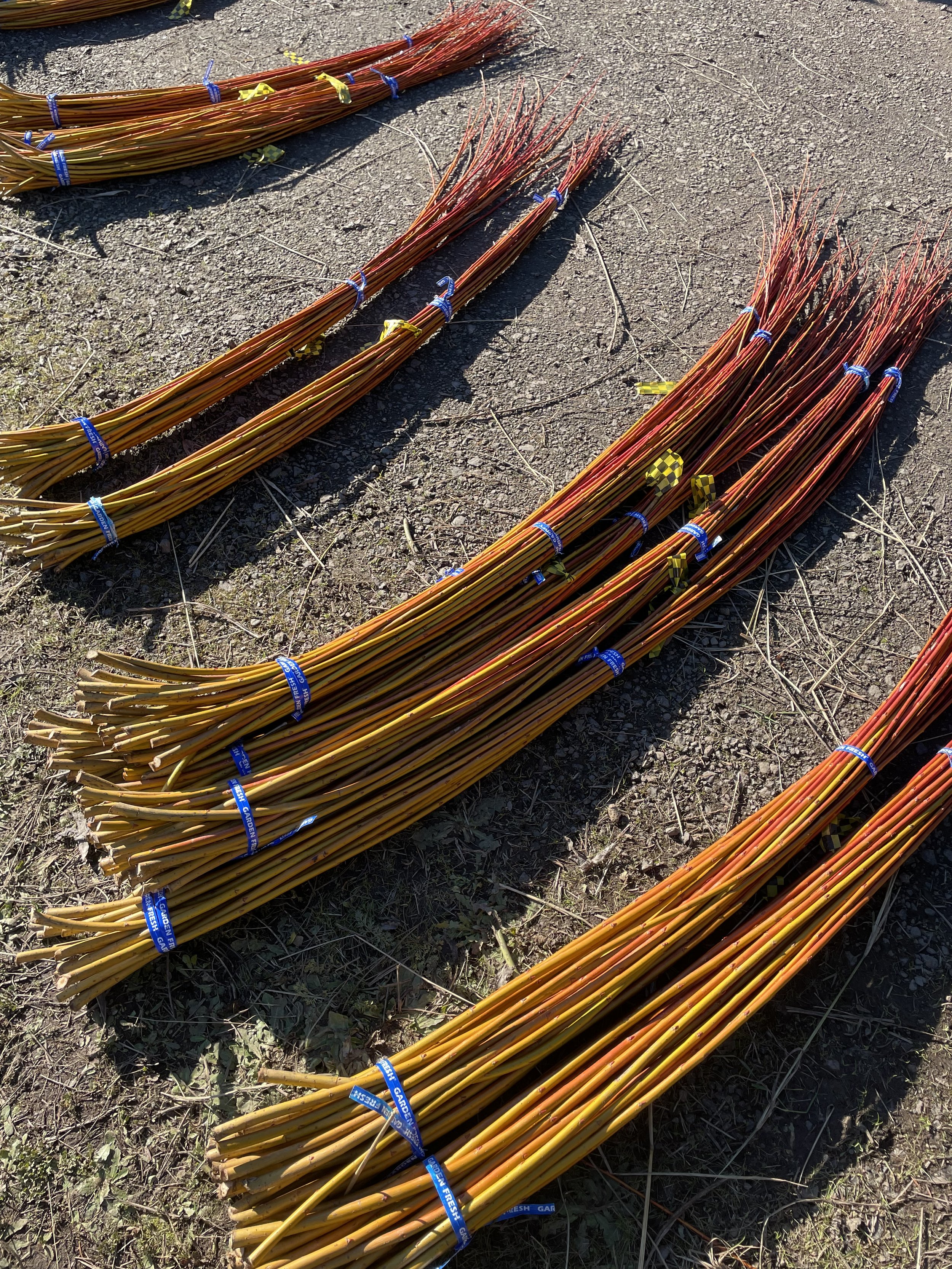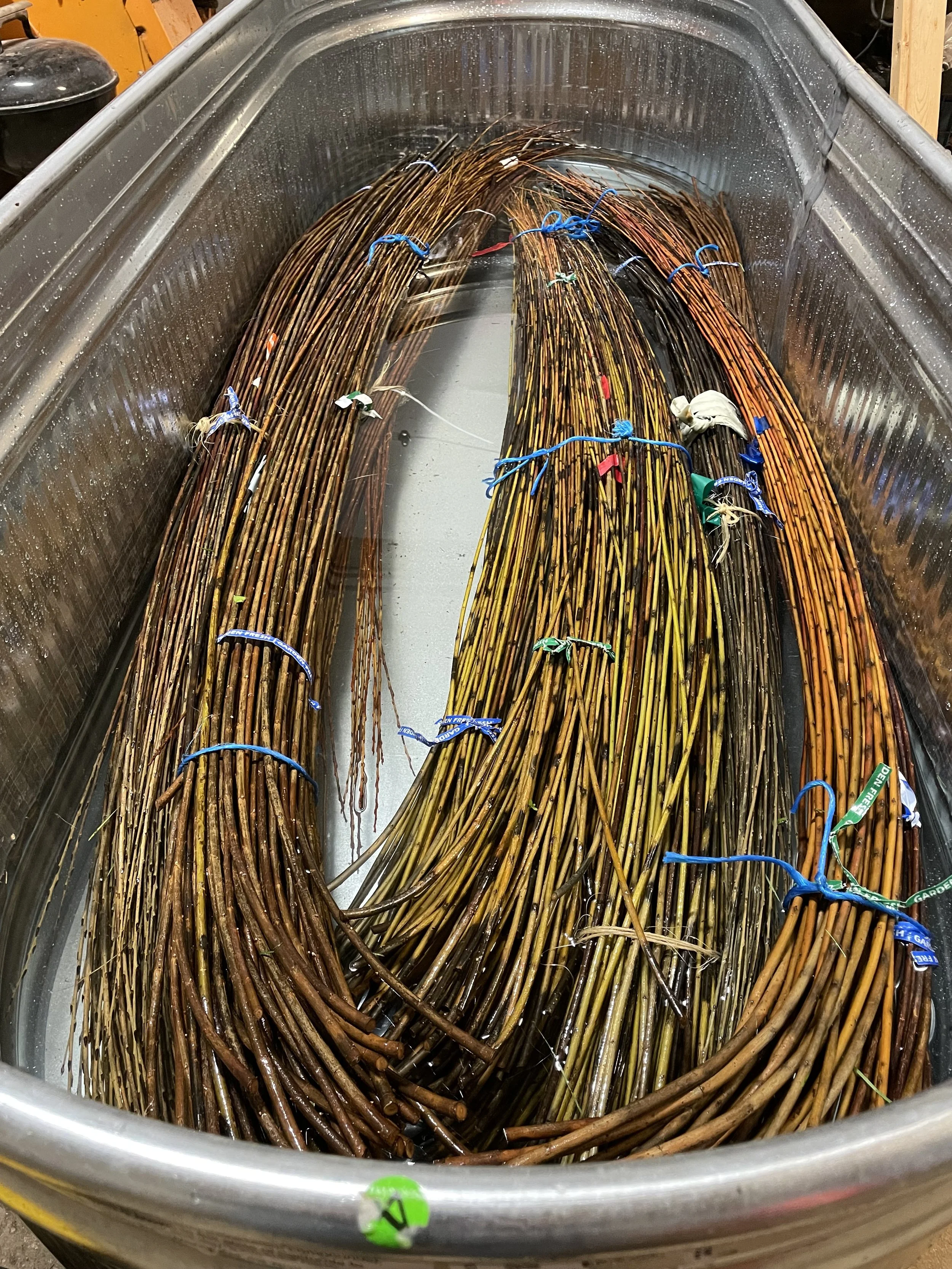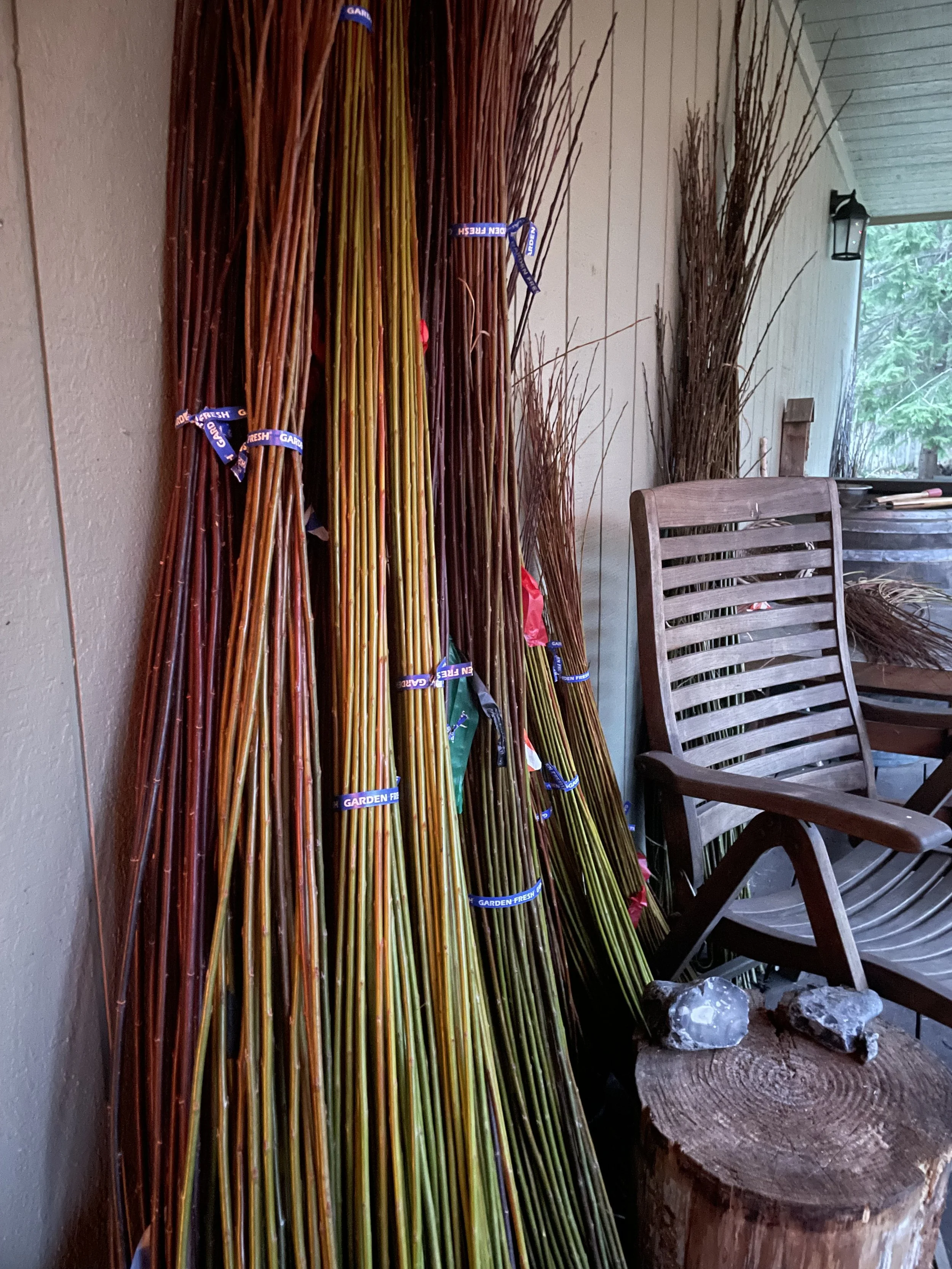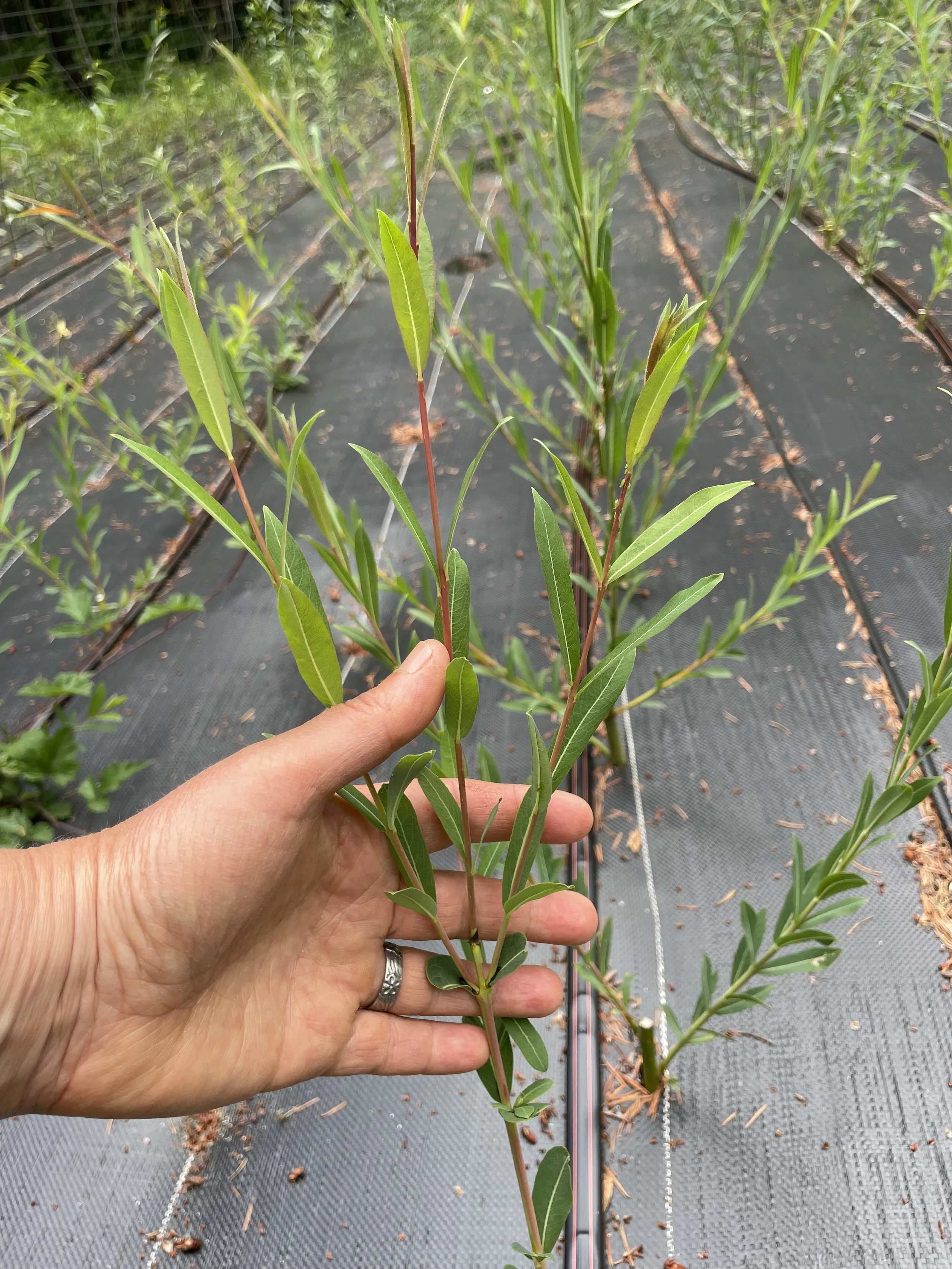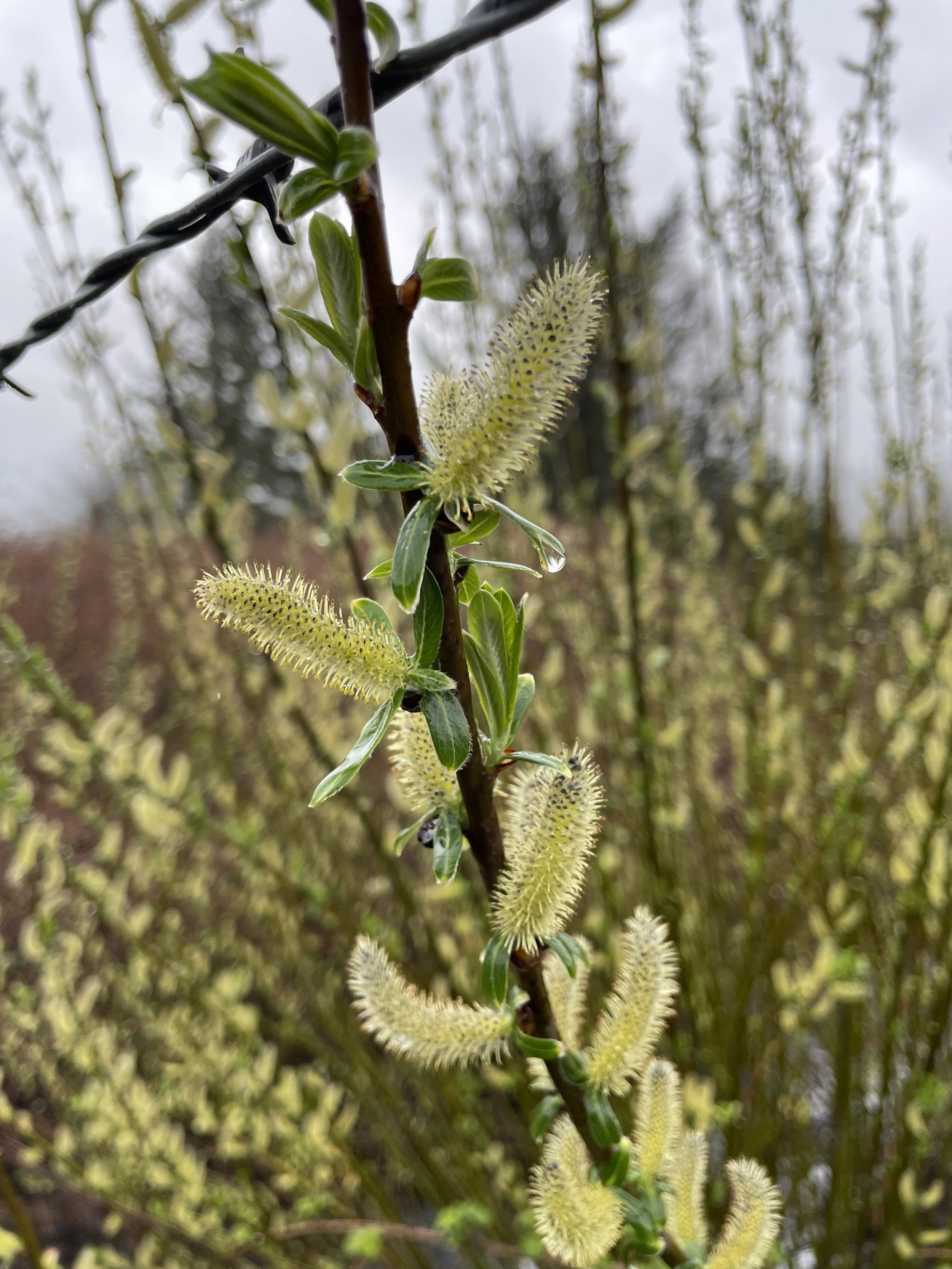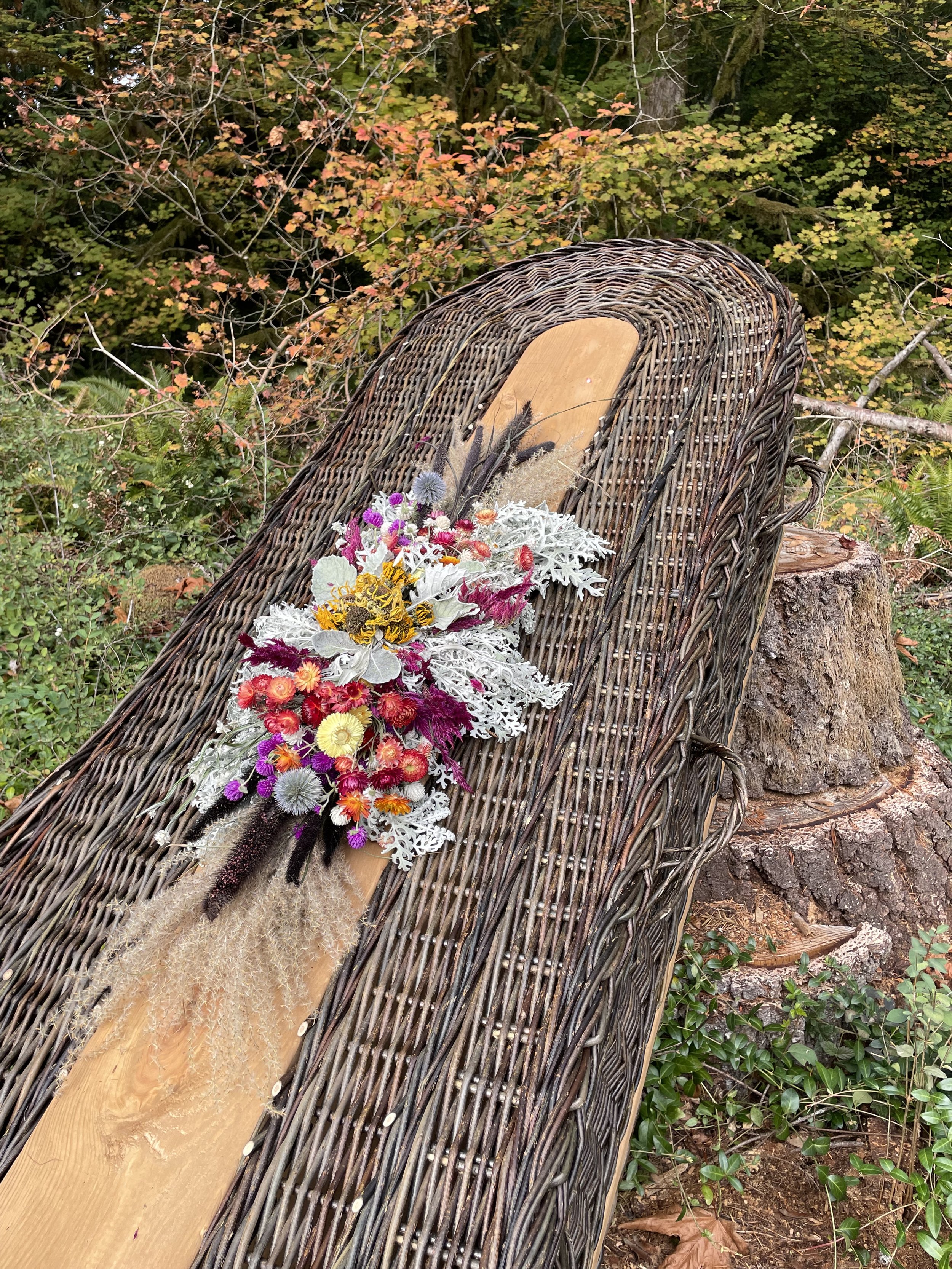Did you know that there are more than 350 species of willow growing throughout the world?
Tiny 2-inch willow hug alpine ravines. Branchy shrubs stand tall in damp wetlands. And colorful plants flex in the wind, cared for over time by basket makers in both wild and home gardens. Willows have distinctive personalities and we are loving our growing relationship with them.
By tending to willow(Salix ssp.) and practicing the functional art of basketry, old ancestral threads are waking up. I like the idea that my ancestors, both recent and very old, had a relationship with some of these same willow species. Some of them bent sticks just like me.
David and I started growing our own willow patch two winters ago and our plot includes about 35 basketry willow varieties, spanning about 13 species total. Many of them are types our ancestors would have woven into baskets in Europe. We are currently raising a modest 1500 coppiced or pollarded plants and will expand this coming Winter to just over 2000. This may sound like a lot of willow, but it actually takes 1000 rods around 6-8’ to make just one full sized willow casket. Our plants may produce around 20 rods per plant at peak maturity, and they will all be various lengths and diameters. So it’s a great start! We’re also developing relationships with some local wild willow varieties that may also work for basketry.
Our skills grow as our willow grows. When we first started, it was hard to find enough basket-quality willow with which to practice. There were not many growers here, and the rods people were selling could be as much as $15/lb. We have access to local, wild willows, but they were not all suitable for basket-making or could not be used for all parts of a basket. We are excited for our first substantial harvest from our own plot this year and look forward to a the many hours we’ll get to weave away in our studio.
There is an expanding willow culture here in the PNW and we’re seeing more folks raising plants at home, tending to it in the wild, and relating to it more intimately. I’m sure you’ll be seeing more opportunities to work with it yourself or purchase finished pieces in the coming years, depending on how we and they fair in our shifting climate. We will be offering opportunities to learn and purchase willow projects as we grow our skills.
Interested in a custom willow casket? Please reach out in 2026 to start a conversation.
The casket you see above was woven in Autumn 2025. It has a home in our studio and is available to view in 2026. A casket in this style, with wooden bottom and embedded lid, requires around 1000 willow rods and 40-50 hours of weaving. We are happy to consider making one like this for you. Please reach out if you are interested.
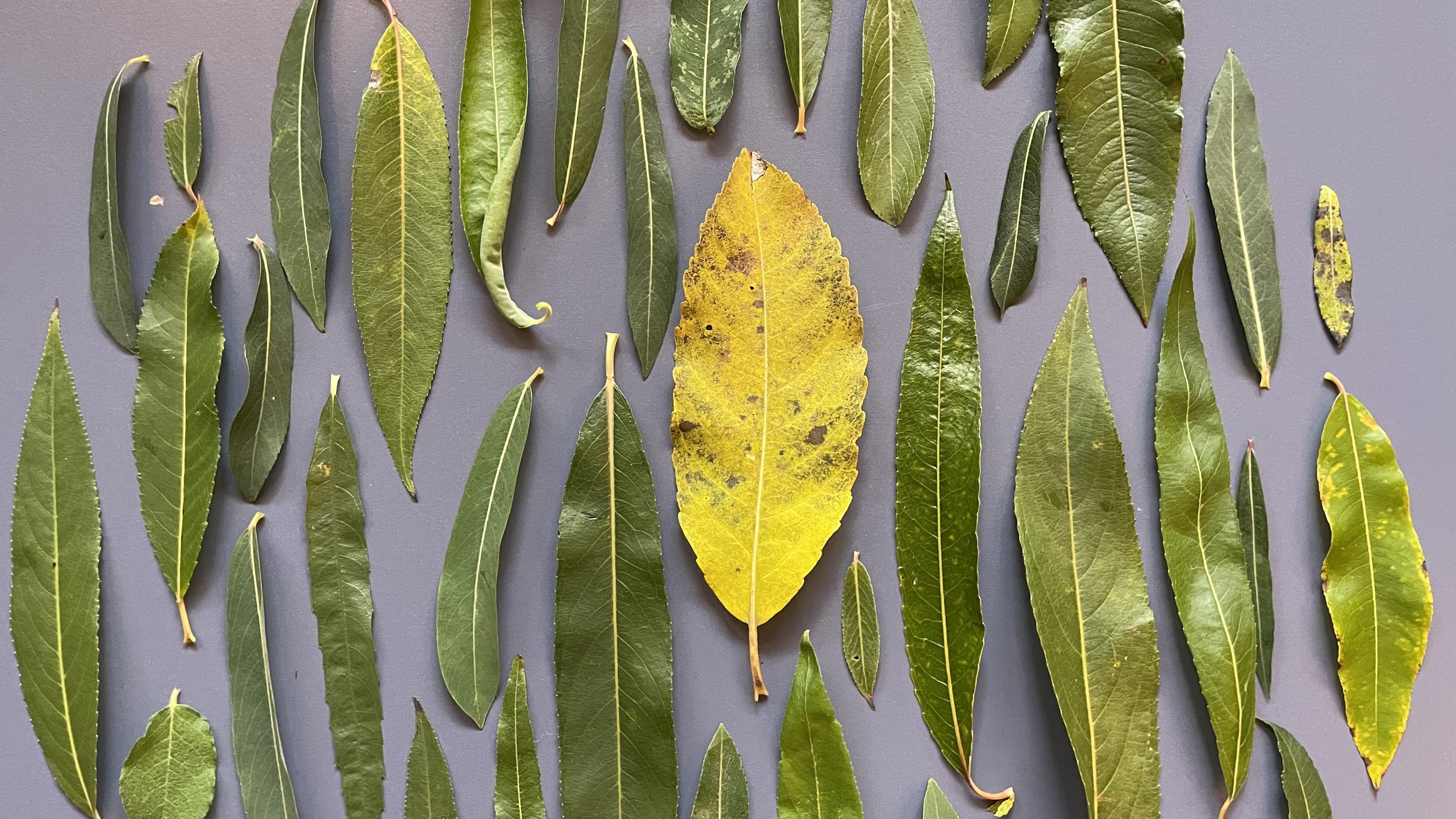
Thank you
Joining the Columbia Basin Basketry Guild was pivotal for our learning, acquiring willow for our home plot, and connecting with others who are also on their own weaving journeys. June is the acting Program Chair for the guild and has enjoyed learning about other types of weaving from the artists she helps set up for monthly presentations as well.
Teachers, basketry makers and growers who have either directly or indirectly impacted our work recently through classes or interactions include, but are definitely not limited to:
Carol Horvath from CBBG in Oregon, Kate & Alan from Westcountry Willow in Ireland, Margaret Mathewson in Oregon, Joe Hogan in Ireland, Katherine Lewis and Steve from Dunbar Gardens in Washington, and Mo Hohmann from Coyote Willow Schoolhouse in WA, Hannah van Aelst in Ireland, Eli & Ben Goodwin of Goodwin Basket Garden.

